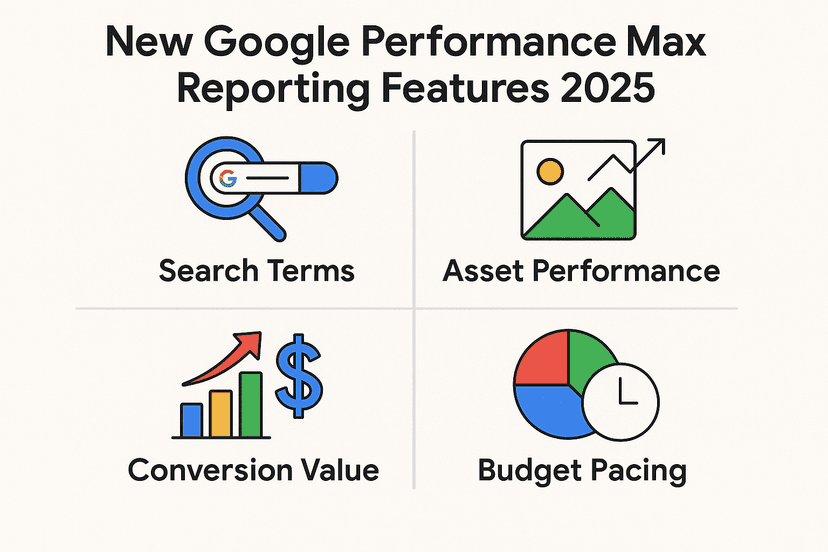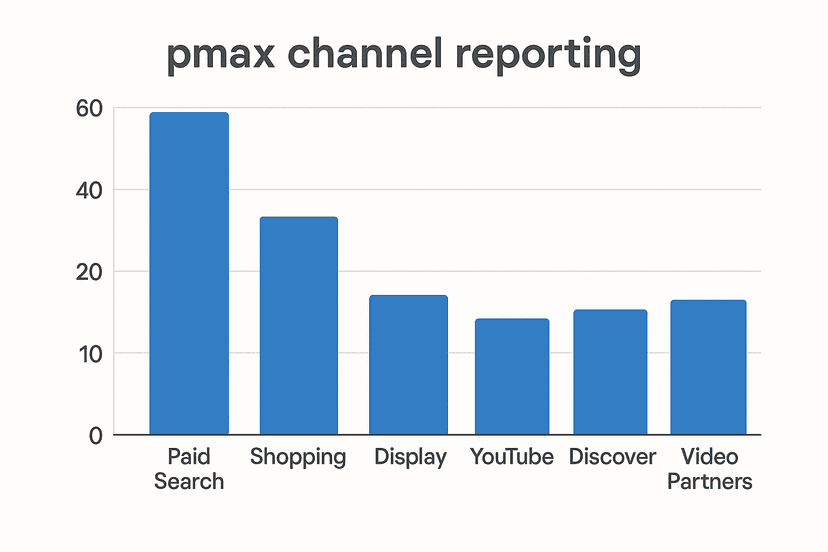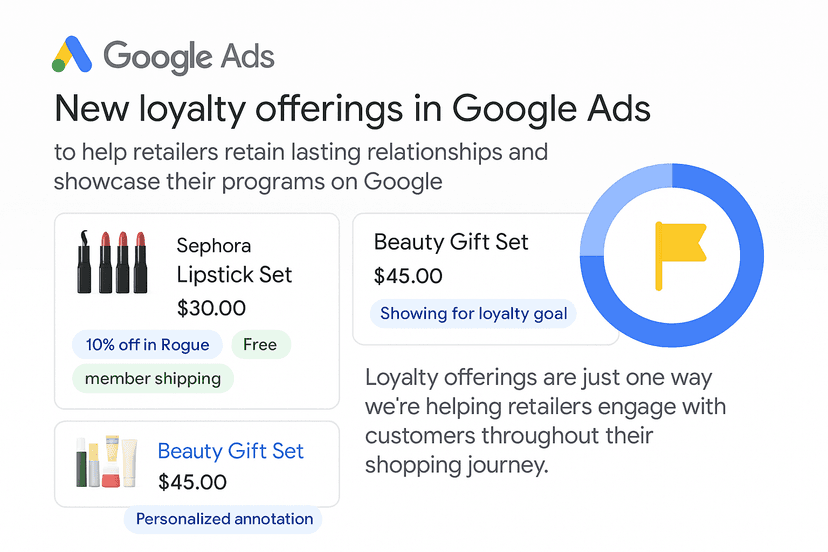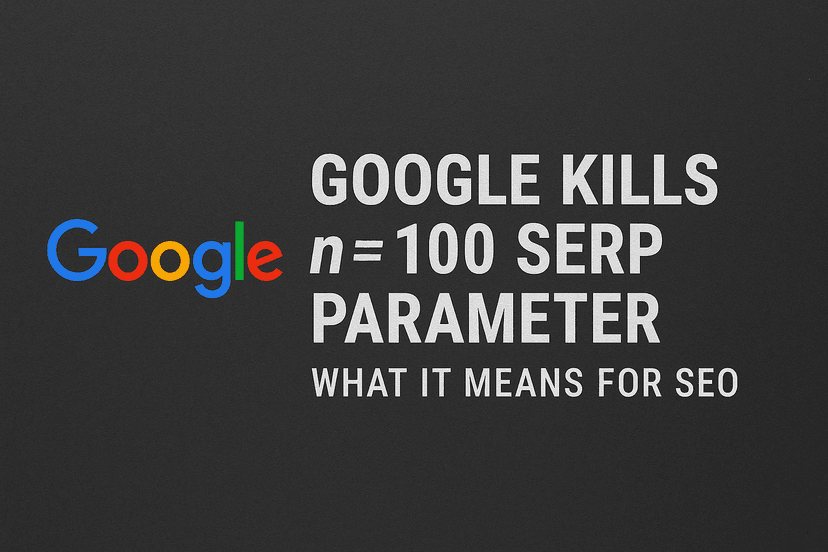- Introduction
- The Growing Opportunity of iOS App Marketing
- Enhanced Ad Formats for Maximum Reach and Engagement
- YouTube’s Expanding Role in iOS App Campaigns
- Co-Branded Partnership Ads: A Game-Changer
- Playable Ad Formats on AdMob
- AI-Powered Bidding Strategies for Better Performance
- Target ROAS Bidding Now Available for iOS
- Maximize Conversion Bidding Strategy
- Revolutionary Creative Tools Powered by AI
- Privacy-Centric Measurement in the iOS Ecosystem
- On-Device Conversion Measurement
- Integrated Conversion Measurement Solutions
- Best Practices for iOS App Campaign Success
- Real-World Success Stories
- The Future of iOS App Marketing
- Conclusion
Introduction
The mobile app marketing landscape continues to evolve rapidly, with iOS representing one of the most lucrative and challenging platforms for advertisers. As consumer spending in the App Store surges by 24% year-over-year according to recent data from app intelligence firm Appfigures, the opportunity for app marketers to tap into high-value iOS users has never been more compelling. However, succeeding in this environment requires sophisticated strategies, cutting-edge technology, and a deep understanding of privacy-focused measurement approaches.
The introduction of new ad formats, artificial intelligence-powered tools, and privacy-centric measurement capabilities is transforming how marketers approach their ios app campaign strategies. These innovations are not just incremental improvements but represent fundamental shifts in how advertisers can connect with valuable iOS users across Google’s extensive network, including Search, YouTube, and the Display Advertising.
Understanding these new capabilities and implementing them effectively can mean the difference between a mediocre campaign and exceptional results that drive meaningful business growth. This comprehensive guide explores the latest developments in iOS app marketing, providing actionable insights that can help marketers maximize their campaign performance while navigating the complex privacy landscape that defines modern mobile advertising.
The Growing Opportunity of iOS App Marketing
The iOS ecosystem presents a unique and highly valuable opportunity for app marketers. Unlike other platforms where users may be more price-sensitive or less engaged, iOS users consistently demonstrate higher lifetime values, increased in-app purchase rates, and stronger engagement metrics. This premium user base makes every acquisition potentially more valuable, but it also means competition is fierce and strategies must be precisely executed.
Recent market research reveals fascinating insights about consumer behavior patterns that directly impact ios app campaign effectiveness. An Ipsos survey discovered that Google and YouTube are used daily by 83% of global consumers, highlighting the massive reach potential available through Google’s advertising ecosystem. This widespread usage creates multiple touchpoints where marketers can connect with their target audiences throughout their daily digital journeys.
The shift in consumer spending patterns toward mobile apps has accelerated dramatically over recent years. Users are not only downloading more apps but are also spending significantly more money within those applications. This trend creates a compound effect where successful user acquisition becomes increasingly valuable as each acquired user represents higher potential revenue.
Furthermore, the iOS platform’s emphasis on privacy and security resonates with users who are willing to pay premium prices for apps and in-app purchases. This demographic characteristic means that while acquisition costs may be higher on iOS compared to other platforms, the return on investment often justifies the increased spend when campaigns are properly optimized and targeted.
The integration of advanced machine learning algorithms and artificial intelligence into advertising platforms has made it possible to identify and target high-value iOS users with unprecedented precision. These technological improvements enable marketers to optimize their campaigns in real-time, adjusting bids, creative elements, and targeting parameters to maximize performance outcomes.
Enhanced Ad Formats for Maximum Reach and Engagement
The evolution of ad formats represents one of the most significant developments in modern ios app campaign strategy. Traditional banner ads and simple video advertisements are giving way to more sophisticated, interactive formats that capture user attention and drive meaningful engagement. These new formats leverage the unique capabilities of different platforms while maintaining consistency in brand messaging and campaign objectives.
Interactive ad experiences have proven particularly effective in the iOS environment, where users expect high-quality, polished experiences. The introduction of playable ads, augmented reality experiences, and rich media formats allows marketers to provide potential users with a genuine preview of their app’s functionality and value proposition before they commit to downloading.
Cross-platform format optimization has become crucial as users consume content across multiple devices and platforms throughout their day. A successful ios app campaign must seamlessly adapt its creative elements to perform effectively whether displayed on a smartphone screen during a YouTube video, integrated into search results, or presented as part of a Display Advertising placement.
The sophistication of modern ad formats extends beyond visual appeal to include advanced tracking and measurement capabilities. These formats can capture detailed interaction data that provides insights into user preferences, engagement patterns, and likelihood to convert. This data becomes invaluable for optimizing future campaigns and refining targeting strategies.
Dynamic creative optimization has emerged as a critical component of successful ad format implementation. Rather than creating static advertisements that remain unchanged throughout a campaign, modern formats can automatically adjust elements like headlines, images, calls-to-action, and even entire creative concepts based on real-time performance data and user behavior patterns.
YouTube’s Expanding Role in iOS App Campaigns
YouTube’s position as the world’s second-largest search engine and its massive daily user base make it an indispensable component of any comprehensive ios app campaign strategy. The platform’s unique combination of entertainment content, educational resources, and advertising opportunities creates multiple pathways for reaching potential app users in contextually relevant environments.
The emergence of YouTube Shorts as a significant content format has created new opportunities for app marketers to reach audiences who might not be accessible through other platforms. Research indicates that in the United States, 45% of YouTube Shorts viewers don’t use TikTok, and 65% don’t use Instagram Reels. This audience overlap data reveals substantial opportunities for marketers to expand their reach by incorporating YouTube Shorts into their campaign strategies.
Video content consumption patterns on YouTube provide valuable insights for ios app campaign optimization. Users typically engage with YouTube content during specific times of day, for particular durations, and with varying levels of attention depending on the content type. Understanding these patterns allows marketers to time their campaigns effectively and create content that aligns with user expectations and engagement levels.
The platform’s advanced targeting capabilities enable precise audience segmentation based on viewing history, search behavior, demographic characteristics, and interest categories. This granular targeting ensures that ios app campaign advertisements reach users who are most likely to be interested in downloading and engaging with the promoted application.
YouTube’s integration with Google’s broader advertising ecosystem creates opportunities for cross-platform campaign optimization and measurement. Performance data from YouTube campaigns can inform optimization decisions across Search and Display Network placements, creating a holistic approach to campaign management that maximizes efficiency and effectiveness.
Co-Branded Partnership Ads: A Game-Changer
The introduction of co-branded partnership ads to App campaigns represents a significant evolution in how marketers can leverage influencer relationships and creator partnerships to drive ios app campaign performance. These advertisements combine the authenticity and engagement of creator content with the precision targeting and optimization capabilities of Programmatic advertising platforms.
Creator partnerships have proven exceptionally effective in the mobile app marketing space because they provide social proof and authentic endorsements that resonate with target audiences. When users see their favorite creators genuinely using and recommending an app, the conversion likelihood increases significantly compared to traditional advertising approaches.
The expansion of co-branded partnership ads to YouTube in-feed and Shorts app ads creates multiple touchpoints where these authentic endorsements can reach potential users. In-feed ads appear alongside organic content, making them feel more natural and less intrusive, while Shorts ads can capture attention during the highly engaging short-form video consumption experience.
Authentication and transparency remain critical components of successful co-branded partnership campaigns. Users have become increasingly sophisticated at identifying and dismissing inauthentic endorsements, making genuine creator relationships and honest product experiences essential for campaign success.
Measuring the effectiveness of co-branded partnership ads requires sophisticated attribution models that can account for the complex user journeys typically associated with Influencer Marketing. Users might see a creator endorsement, research the app independently, and convert days or weeks later, making traditional last-click attribution models inadequate for accurately assessing campaign performance.
Playable Ad Formats on AdMob
Playable advertisements represent one of the most innovative developments in ios app campaign advertising, offering potential users an interactive preview of the app experience before they commit to downloading. These ads are particularly effective for gaming apps but have proven valuable across various app categories by providing users with immediate value and engagement.
The implementation of playable ads as end cards after video advertisements on select AdMob inventory creates a natural progression from passive viewing to active engagement. Users who have already invested time watching a video advertisement are more likely to interact with a playable demo, creating a higher-quality engagement that often translates to improved conversion rates and user lifetime values.
Technical implementation of playable ads requires careful consideration of loading times, performance optimization, and user experience design. The interactive demo must load quickly and run smoothly across various device types and network conditions to avoid frustrating potential users and negatively impacting campaign performance.
Creative design for playable advertisements differs significantly from traditional static or video ads. The interactive experience must effectively communicate the app’s core value proposition while remaining simple enough for users to understand and engage with quickly. This balance between functionality and simplicity often determines the success of playable ad campaigns.
Performance measurement for playable ads extends beyond traditional metrics like clicks and impressions to include engagement duration, interaction completion rates, and post-interaction behavior patterns. These additional data points provide deeper insights into user interest levels and can inform optimization strategies that improve overall ios app campaign effectiveness.
AI-Powered Bidding Strategies for Better Performance
Artificial intelligence has revolutionized the bidding landscape for ios app campaign management, enabling marketers to optimize their campaigns with unprecedented precision and efficiency. Machine learning algorithms can analyze vast amounts of historical performance data, real-time market conditions, and user behavior patterns to make bidding decisions that human marketers would struggle to replicate manually.
The sophistication of modern AI-powered bidding extends far beyond simple automated bid adjustments. These systems consider hundreds of variables simultaneously, including device types, geographic locations, time of day, user demographics, historical conversion patterns, and competitive landscape dynamics to determine optimal bid amounts for each auction opportunity.
Real-time optimization capabilities allow AI-powered bidding systems to adapt immediately to changing market conditions, seasonal trends, and campaign performance variations. This responsiveness ensures that ios app campaign budgets are allocated efficiently and that opportunities for high-value user acquisition are not missed due to delayed manual adjustments.
Predictive modeling components within AI-powered bidding systems can forecast future performance trends and adjust strategies proactively rather than reactively. These capabilities help marketers stay ahead of market changes and maintain consistent campaign performance even as competitive landscapes evolve.
Integration with broader marketing technology stacks enables AI-powered bidding systems to incorporate data from customer relationship management systems, analytics platforms, and attribution providers to make more informed bidding decisions that align with overall business objectives rather than just immediate campaign metrics.
Target ROAS Bidding Now Available for iOS
The availability of target return on ad spend bidding for iOS represents a significant advancement in value-based optimization strategies for app marketers. This bidding approach shifts focus from volume-based metrics like cost per install to value-based outcomes that align more closely with business profitability and long-term success.
Implementation of target ROAS bidding requires sophisticated conversion tracking and value measurement systems that can accurately attribute revenue to specific advertising activities. The complexity of iOS attribution, particularly following privacy updates, makes this measurement challenging but essential for effective campaign optimization.
Campaign performance under target ROAS bidding often follows different patterns compared to traditional cost-per-acquisition campaigns. Initial learning periods may show higher acquisition costs as the algorithm identifies high-value user segments, but long-term performance typically demonstrates improved profitability and user lifetime values.
Real-world applications of target ROAS bidding have shown impressive results across various app categories. For example, Uatas, an Indonesia-based lending app, achieved a 7% increase in ROAS compared to historical iOS campaign performance after adopting this bidding strategy. These success stories demonstrate the practical value of implementing advanced bidding strategies in ios app campaign management.
Optimization strategies for target ROAS bidding involve careful balance between target values and campaign volume. Setting targets too aggressively can limit campaign reach and miss valuable user acquisition opportunities, while setting them too conservatively may not maximize profitability potential.
Maximize Conversion Bidding Strategy
The expansion of maximize conversion bidding to App campaigns represents another powerful tool in the ios app campaign optimization toolkit. This strategy leverages Google’s artificial intelligence capabilities to automatically optimize bids for maximum conversion volume within specified budget constraints, removing much of the manual complexity from campaign management.
Algorithmic sophistication behind maximize conversion bidding enables the system to identify optimal bid amounts across millions of auction opportunities daily. The machine learning models consider historical performance data, real-time market conditions, and predictive analytics to ensure that every dollar of campaign budget is allocated as efficiently as possible.
Budget management becomes more strategic under maximize conversion bidding, as marketers can focus on setting appropriate daily or monthly budget levels while trusting the algorithm to distribute those budgets optimally across time periods and audience segments. This approach often results in more consistent day-to-day performance and better overall campaign efficiency.
Performance monitoring for maximize conversion bidding campaigns requires focus on different metrics compared to manual bidding approaches. While cost-per-conversion may fluctuate more significantly, overall conversion volume and efficiency typically improve as the algorithm identifies and capitalizes on high-opportunity moments throughout each campaign period.
Integration with other optimization features enhances the effectiveness of maximize conversion bidding. When combined with advanced audience targeting, creative optimization, and measurement solutions, this bidding strategy can deliver exceptional results for ios app campaign objectives.
Revolutionary Creative Tools Powered by AI
Artificial intelligence is transforming creative development and optimization for ios app campaign management, enabling marketers to produce and test more creative variations than ever before while maintaining high quality and brand consistency. These tools automate traditionally time-consuming creative tasks while providing insights that improve campaign performance.
Video enhancement capabilities represent one of the most impressive applications of AI in creative development. Advanced models can intelligently extend videos beyond their original frames, flip orientations, and adapt content for different screen sizes and placements while preserving key visual elements and messaging effectiveness.
Automated creative adaptation ensures that ios app campaign advertisements perform optimally across YouTube’s diverse ad formats without requiring separate creative development for each placement type. This efficiency allows marketers to focus resources on strategic creative concepts rather than technical adaptation requirements.
Quality preservation during automated creative modification has reached sophisticated levels where AI systems can maintain visual coherence, brand consistency, and messaging clarity even when significantly altering original creative assets. This capability enables broader campaign reach without compromising creative effectiveness.
Performance optimization through creative testing becomes more systematic and comprehensive with AI-powered tools. These systems can generate multiple creative variations, test them simultaneously across different audience segments and placements, and automatically optimize toward the highest-performing combinations.
Privacy-Centric Measurement in the iOS Ecosystem
The evolution of privacy requirements in the iOS ecosystem has fundamentally changed how marketers approach measurement and attribution for their campaigns. Successful ios app campaign strategies must now balance effective optimization with respect for user privacy preferences and platform requirements.
On-device measurement technologies have emerged as crucial solutions for maintaining campaign effectiveness while protecting user privacy. These approaches process conversion and attribution data locally on user devices, ensuring that personally identifiable information never leaves the device or gets shared with external parties, including advertising platforms.
Aggregated reporting methodologies provide campaign performance insights without compromising individual user privacy. These systems combine data from multiple users to provide meaningful performance metrics while preventing the identification of specific user behaviors or characteristics.
Compliance considerations extend beyond technical implementation to include transparent communication with users about data collection and usage practices. Successful ios app campaign strategies incorporate privacy-conscious messaging and opt-in procedures that build trust while maintaining measurement capabilities.
Future-proofing measurement strategies requires staying informed about evolving privacy regulations, platform policies, and user expectations. Marketers who proactively adapt their measurement approaches are better positioned to maintain campaign effectiveness as privacy requirements continue to evolve.
On-Device Conversion Measurement
On-device conversion measurement represents a significant technological advancement that addresses privacy concerns while maintaining the measurement accuracy needed for effective ios app campaign optimization. This approach processes conversion events locally on user devices, ensuring that sensitive user information never leaves the device environment.
Technical implementation of on-device measurement requires sophisticated software development and integration with existing analytics platforms. The measurement solution must accurately track conversion events while preventing any data leakage that could compromise user privacy or violate platform policies.
Data aggregation processes combine on-device measurements across multiple users to provide campaign-level insights without revealing individual user behaviors. This aggregation maintains statistical significance for optimization decisions while protecting individual privacy rights.
Performance benefits of on-device measurement often include more accurate attribution data since the measurement occurs closer to the actual conversion events. This proximity reduces the likelihood of attribution errors caused by network delays, technical issues, or data processing discrepancies.
Integration challenges may arise when implementing on-device measurement alongside existing marketing technology stacks. Successful implementation requires careful coordination between analytics providers, attribution partners, and advertising platforms to ensure data consistency and campaign optimization effectiveness.
Integrated Conversion Measurement Solutions
Integrated conversion measurement solutions provide comprehensive attribution insights that combine multiple data sources while maintaining privacy compliance. These systems enable marketers to understand the full impact of their ios app campaign activities across various touchpoints and conversion pathways.
Third-party attribution partner integration ensures that conversion measurement data flows seamlessly between advertising platforms and analytics systems. This integration provides more complete performance visibility and enables optimization decisions based on comprehensive user journey understanding.
Real-time reporting capabilities enable marketers to monitor campaign performance continuously and make optimization adjustments quickly. The speed and accuracy of integrated measurement solutions can significantly impact campaign effectiveness, particularly in competitive markets where rapid response to performance changes is crucial.
Comprehensive attribution models account for complex user journeys that may involve multiple touchpoints across different platforms and time periods. These sophisticated models provide more accurate insights into campaign effectiveness and return on investment than simpler attribution approaches.
Success metrics for integrated conversion measurement extend beyond traditional performance indicators to include data accuracy, reporting latency, and integration reliability. Marketers using these solutions often observe significant improvements in their ability to optimize campaigns and demonstrate marketing effectiveness to stakeholders.
Best Practices for iOS App Campaign Success
Developing effective ios app campaign strategies requires comprehensive understanding of platform capabilities, user behaviors, and optimization techniques. Successful campaigns typically incorporate multiple best practices that work synergistically to drive superior performance outcomes.
Audience targeting strategies should leverage all available data sources while respecting privacy constraints. Effective targeting combines demographic information, behavioral patterns, interest indicators, and lookalike modeling to identify users most likely to install and engage with promoted applications.
Creative optimization processes should include systematic testing of different messaging approaches, visual elements, and call-to-action variations. The most successful ios app campaign strategies incorporate continuous creative testing and optimization based on performance data and user feedback.
Budget allocation strategies should consider the different performance characteristics of various ad formats and placement types. Optimal budget distribution often involves careful analysis of return on investment across different campaign components and regular reallocation based on performance trends.
Performance monitoring should focus on meaningful business metrics rather than just vanity indicators. Successful campaigns track metrics like user lifetime value, retention rates, and in-app engagement levels alongside traditional metrics like install rates and cost per acquisition.
Real-World Success Stories
Examining real-world success stories provides valuable insights into effective ios app campaign implementation and optimization strategies. These case studies demonstrate practical applications of advanced features and techniques across different app categories and market conditions.
The Uatas lending app case study illustrates the effectiveness of target ROAS bidding for iOS campaigns. After implementing this advanced bidding strategy, the company achieved a 7% increase in ROAS compared to their historical campaign performance. This improvement demonstrates how sophisticated bidding approaches can drive meaningful business outcomes.
Codeway’s experience with integrated conversion measurement showcases the power of advanced attribution solutions. The AI-powered consumer app publisher observed a 6X increase in installs and an 80% lower cost per install in App Attribution Partner reporting after implementing Google’s ICM solution. These dramatic improvements highlight the importance of accurate measurement for campaign optimization.
Success factors common across multiple case studies include commitment to testing new features, investment in proper measurement implementation, and focus on long-term user value rather than just immediate conversion metrics. Companies that achieve exceptional results typically approach ios app campaign management as an ongoing optimization process rather than a set-and-forget activity.
Performance improvement patterns often show initial learning periods followed by significant gains as algorithms optimize and marketers refine their strategies. Understanding these patterns helps set appropriate expectations and ensures continued investment in optimization efforts during initial implementation phases.
The Future of iOS App Marketing
The ios app campaign landscape continues to evolve rapidly, driven by technological advances, changing user behaviors, and evolving privacy requirements. Marketers who understand these trends and adapt their strategies accordingly will be best positioned for future success.
Artificial intelligence will likely play an increasingly important role in campaign optimization, creative development, and audience targeting. Machine learning capabilities will become more sophisticated and accessible, enabling even smaller app developers to leverage advanced optimization techniques that were previously available only to large enterprises.
Privacy protection will remain a central consideration in campaign development and execution. Future ios app campaign strategies will need to balance effectiveness with privacy compliance, requiring continuous adaptation to new regulations and platform policies.
Cross-platform integration will become increasingly important as user journeys span multiple devices, platforms, and touchpoints. Successful campaigns will need to coordinate messaging and optimization across various channels while maintaining consistent user experiences and measurement accuracy.
Measurement sophistication will continue advancing to provide more accurate attribution and performance insights while protecting user privacy. These advances will enable better optimization decisions and clearer demonstration of marketing effectiveness to business stakeholders.
Conclusion
The landscape of iOS app marketing has undergone remarkable transformation, with new ad formats, AI-powered optimization tools, and privacy-centric measurement solutions revolutionizing how marketers approach their campaigns. The opportunities presented by the 24% year-over-year growth in App Store consumer spending demonstrate the immense potential for app marketers who can effectively navigate this evolving ecosystem.
The introduction of enhanced ad formats, including co-branded partnership ads on YouTube and playable ad formats on AdMob, provides marketers with sophisticated tools to engage potential users in more authentic and interactive ways. These formats, combined with YouTube’s massive reach among global consumers, create unprecedented opportunities to connect with valuable iOS users across multiple touchpoints.
AI-powered bidding strategies, particularly the availability of target ROAS bidding for iOS and expanded maximize conversion bidding, have transformed campaign optimization from a manual, reactive process to an intelligent, proactive system that continuously adapts to market conditions and user behaviors. Real-world success stories, like Uatas’ 7% ROAS improvement and Codeway’s 6X increase in installs with 80% lower cost per install, demonstrate the tangible business impact of these advanced optimization capabilities.
Privacy-centric measurement solutions, including on-device conversion measurement and integrated conversion measurement, address the fundamental challenge of maintaining campaign effectiveness while respecting user privacy. These technologies ensure that marketers can continue optimizing their ios app campaign performance without compromising user trust or violating privacy requirements.
The future of iOS app marketing will be defined by marketers who embrace these technological advances while maintaining focus on delivering genuine value to users. Success will require continuous learning, systematic testing of new features and formats, and commitment to privacy-conscious practices that build long-term user relationships rather than pursuing short-term conversion gains at the expense of trust.
As the mobile app ecosystem continues evolving, the marketers who invest in understanding and implementing these advanced capabilities will be best positioned to capitalize on the growing opportunities in iOS app marketing while building sustainable, profitable user acquisition strategies that drive meaningful business growth.
More information in Google Ads Blog.







